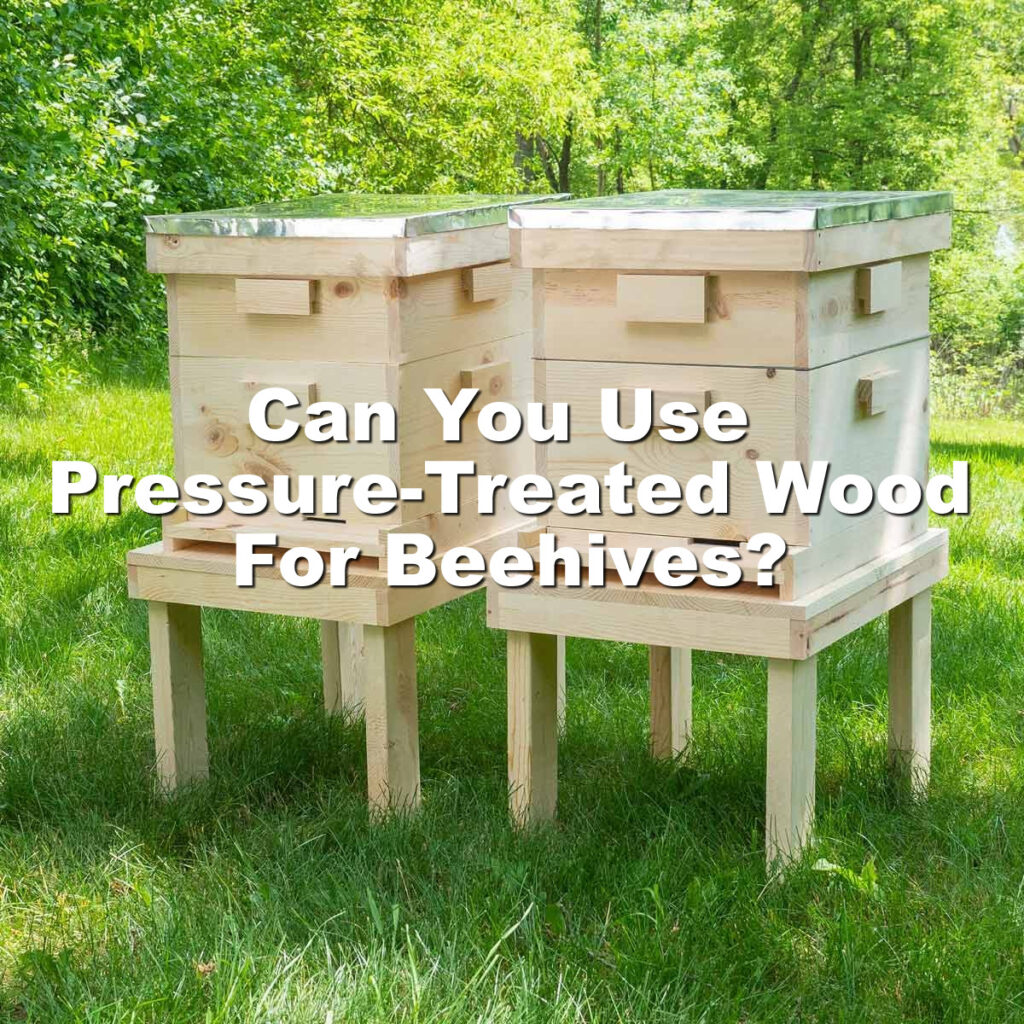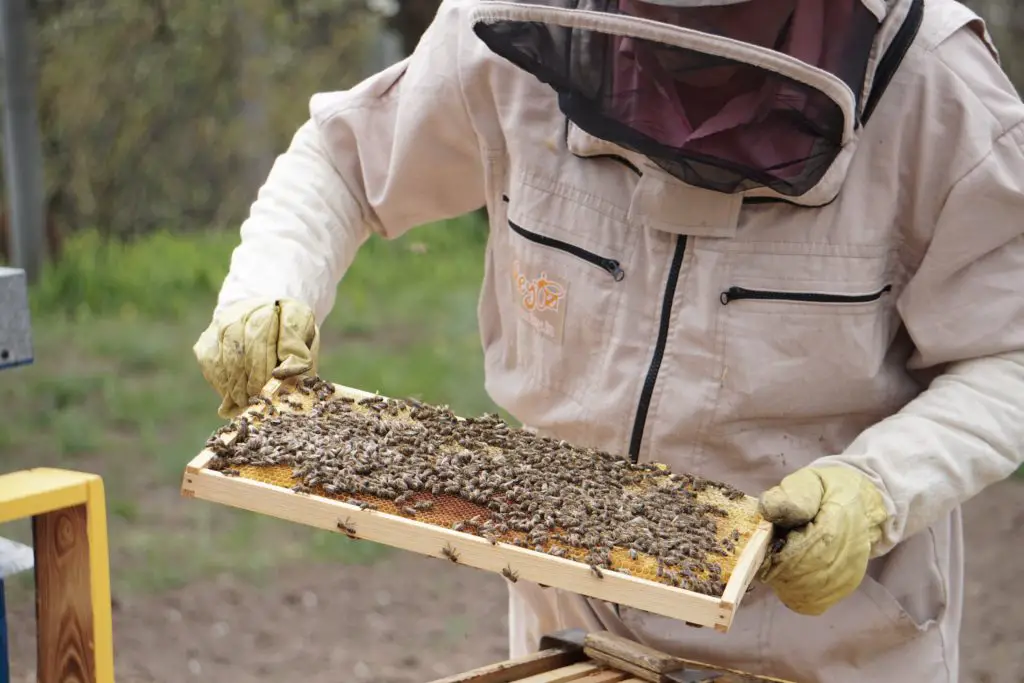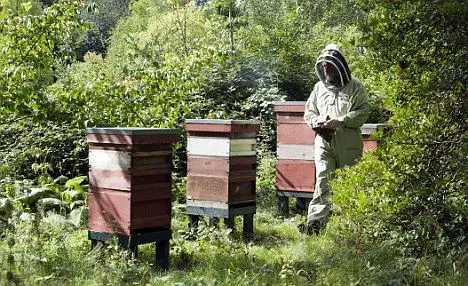Affiliate Disclaimer - As an Amazon Associate I earn from qualifying purchases.
It supports the website. So, Thank you
While it is possible to buy a ready-made beehive, a lot of people prefer to make their own. It’s a brilliant little DIY project and it gives your hobby a personal touch.
But when it comes to making your beehive, you need to make sure that you’re using the right materials. Not doing so could lead to health problems for your colony. Choosing the right type of wood is just one consideration.
Many people want to use pressure-treated wood as it is ideal for outdoor purposes, being so resistant. But can you use pressure-treated wood for beehives and is it safe?
The short answer is no, you shouldn’t use pressure-treated wood for beehives as it has been treated with chemicals which could affect the health of your bees as well as get into your honey supply.
But never fear; there are plenty of other options when it comes to choosing the best wood for beehives. In this guide, we’ll look at the reasons why it is best to avoid pressure-treated wood and provide you with some viable alternatives.
Table of Contents
What Is Pressure Treated Wood?
In order to improve the protection of natural timber, it sometimes undergoes a process known as pressure treating. This involves putting the wood into a vacuum which removes any air from the tiny cells within the wood.
When the vacuum portion of the treatment is over, the machine then forcefully inserts a number of chemical products into the very fibers of the wood. In many cases, manufacturers will tell you that these chemical treatments are designed to be gentle in the garden and on nature. However, most beekeepers will still tell you that this type of wood isn’t suitable for making a beehive.
What Are The Benefits Of Pressure Treated Wood?
You’ll see that pressure-treated wood is used for a whole host of outdoor applications and it’s easy to see why it’s beneficial. Just consider some of the following things:
- Pressure-treated wood provides excellent protection from the elements for your timber. It does not soften as quickly as untreated wood which means there is less chance of bacteria and fungus getting in and causing early decomposition. Just a tiny amount of moisture can be problematic for wood so pressure treating really boosts its resistance.
- When wood is not treated, it not only becomes prone to environmental damage but it will also have a much shorter lifespan. If you’re building something like a shed or patio furniture, you’ll want it to stand the test of time and pressure treating the wood can help with this.
- You will need to pay more for a piece of pressure-treated wood compared to untreated timber. But over time, you’ll save money since you get a much longer lifespan from the timber.
- One of the real benefits of pressure-treated wood is that it’s really easy to take care of. Untreated wood requires much more maintenance whereas pressure treatment means that it’ll pretty much protect itself.
- This type of wood has been treated with chemicals but there are some properties that are considered to be eco-friendly. Primarily, the wood lasts longer so it is more sustainable but more than this, the pressure-treating process produces copper as a byproduct which is reused in other industries so the production process is green as well.
- A lot of people love pressure-treated timber because of how nice it looks without having to go through the effort of painting or staining it. If you like natural-looking timber then this is a great option. That said, it is perfectly possible to paint it if you want a more vibrant look to your garden so it’s versatile as well.
Why Pressure Treated Wood Is Not Good For Beehives
With all of the benefits we have discussed about pressure-treated timber, it would be easy to assume that it’s a brilliant choice for building a beehive. But you’d be mistaken.
Now, don’t get me wrong, I have heard of a lot of beekeepers that have used pressure-treated wood for their beehives. Have they experienced problems? Well, in all honesty, that’s hard to tell as there aren’t many people reporting on the matter.
But most bee enthusiasts would tell you that pressure-treated wood is not something you should be using when making a beehive. The main reason for this is that it has been treated with chemicals. There is a risk of those chemicals contaminating the honey and they could cause health problems for your bees.
On top of this, bees are very particular about their environment and need their hive to be clean. I’ve seen lots of stories of colonies that have put all of their efforts into cleaning the wood which will affect their honey production.
What Type Of Wood Should I Use For A Beehive?
Choosing the right type of wood for your beehive is essential as it will ensure that the hive is safe for the colony and will be strong and resistant to the weather.
Most would agree that pine is the best wood for beehives. It has a lot of amazing properties that make it suitable for this application, not to mention that it’s widely available and one of the most affordable types of softwood out there.
If you want to save even more money then you can choose knotty pine. As the name suggests, there are a number of knots and imperfections within the wood but these do not affect how well it performs. Otherwise, you could go for premium pine which has a much smoother aesthetic.
Whichever type of pine you choose you’ll benefit from the durability and great insulation for the hive. What’s more, pine is really easy to work with so if you’re new to this type of DIY project then you won’t have your hands full.
Just remember that it’s really important to treat your pine with a bee-friendly oil such as tung or linseed. If you don’t then you run the risk of the pine deteriorating very quickly as it is exposed to the elements.
If you’re willing to spend a little more money on your timber then there are other options. Things like cypress are brilliant at naturally repelling water and it creates its own oil for greater resistance. Cedar also has some similar properties but it is far more expensive. That said, if you’re looking for something that’s very easy on the eye then cedar or even walnut are among some of the most beautiful woods for beehives.
Conclusion
If you’ve recently taken up beekeeping and are considering building your own hive then there are a lot of things you’ll need to do in the planning stages. One of the most important decisions you’ll need to make is the type of lumber to use.
A lot of people wonder whether you can use pressure treated wood for beehives. This is not a good idea as the timber will have been treated with chemicals which could pose a risk to your colony.
While pressure-treated wood is incredibly durable and resistant, there are other options that are much safer for your bees. Generally speaking, untreated pine is best as it is naturally durable and when treated with a bee friendly oil, it’ll easily stand up to whatever the weather throws at it.




